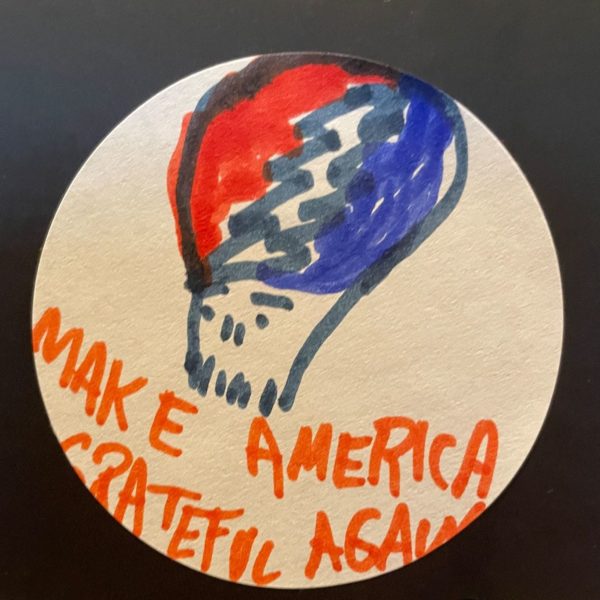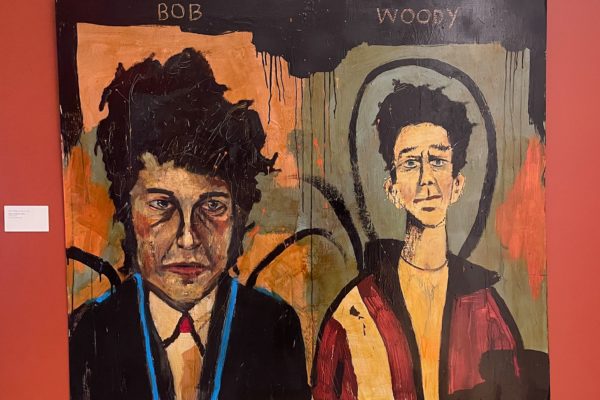
We had a couple of free days between St Louis and our next destination in Colorado. We were trying to decide between a couple rest days – just hang, read, play piano/guitar – or swing through Tulsa, OK to visit the Bob Dylan Center we’d read about. When Suzy told us that the Woodie Guthrie Center is adjacent to the BDC and those rest days evaporated!
The George Kaiser Family Foundation acquired the Woody Guthrie Archives collection in 2011 from the Guthrie family, and the Bob Dylan Archives collection from the artist, himself. Both archives are housed in a building on Reconciliation Way, adjacent to the Greenwood section of Tulsa, where they are available to visiting scholars and researchers. Each has an associated museum focused on each artist’s life, influences and work, and of course their impact on our society and culture.
Woody Guthrie
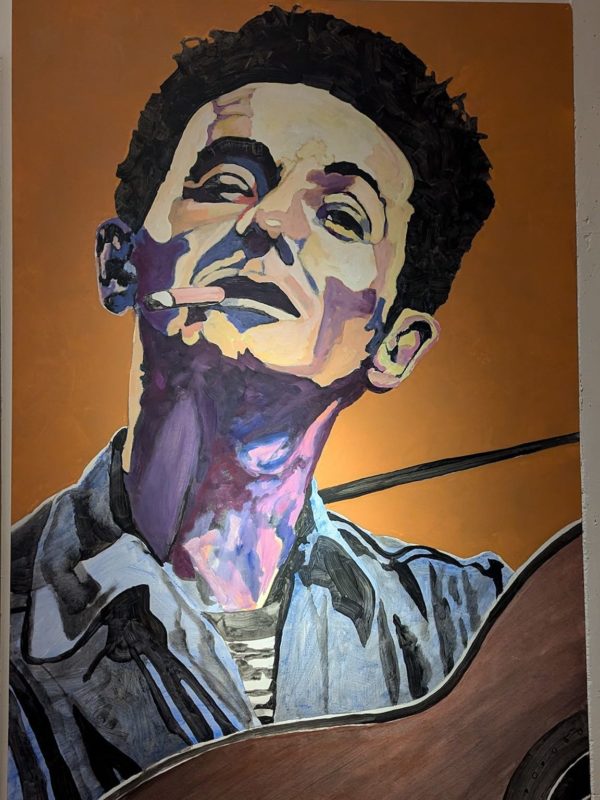
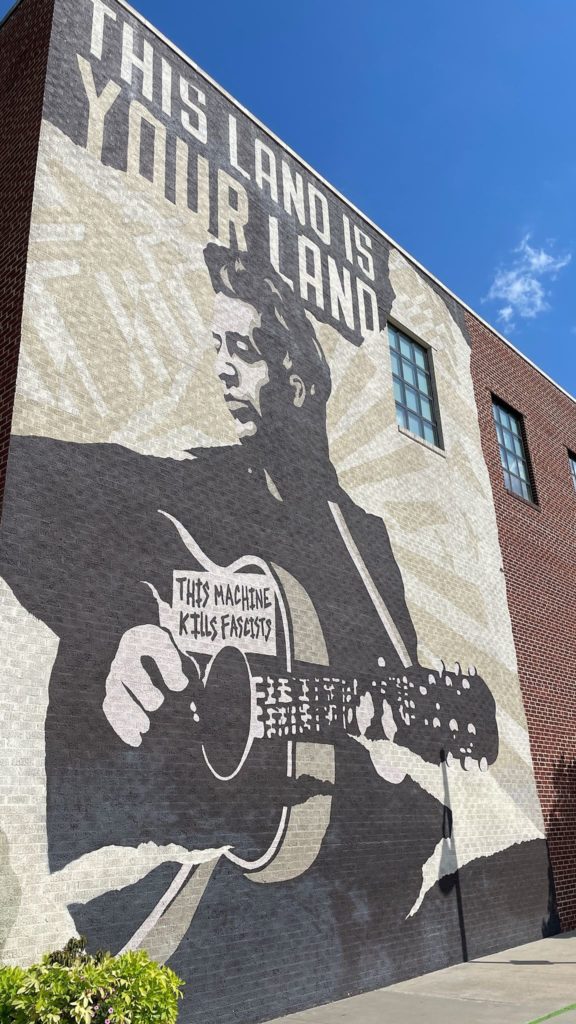
Woody Guthrie was the original folk singer/songwriter. A natural musician and artist born in Okemeh, OK, he was insatiably curious and traveled extensively his entire life. He famously mentioned that growing up in OK where the people were 1/3 American Indian, 1/3 Black and 1/3 White, his music was inspired by the different rhythms and sounds of the music he heard and by the social, economic and political injustice he experienced or observed. He originated and defined the genre of protest songs, and he deeply believed that he could change the world through music.
Certain musicians inspire and influence others that follow them. The chain of musicians influenced by Woody is long and well known – Pete Seeger, Lead Belly, Rambling Jack Elliot, etc… and, of course, Bob Dylan. As mentioned in one of the exhibits, Woody was the anchor on one end of a long chain.
In Woody’s own words:
I am out to sing songs that will prove to you that this is your world and that if it has hit you pretty hard and knocked you for a dozen loops, no what color, what size you are, how are built, I am out to sing the songs that make you take pride in yourself and in your work and the songs that I sing are made up for the most part by all sorts of folks just about like you ~Woody Guthrie
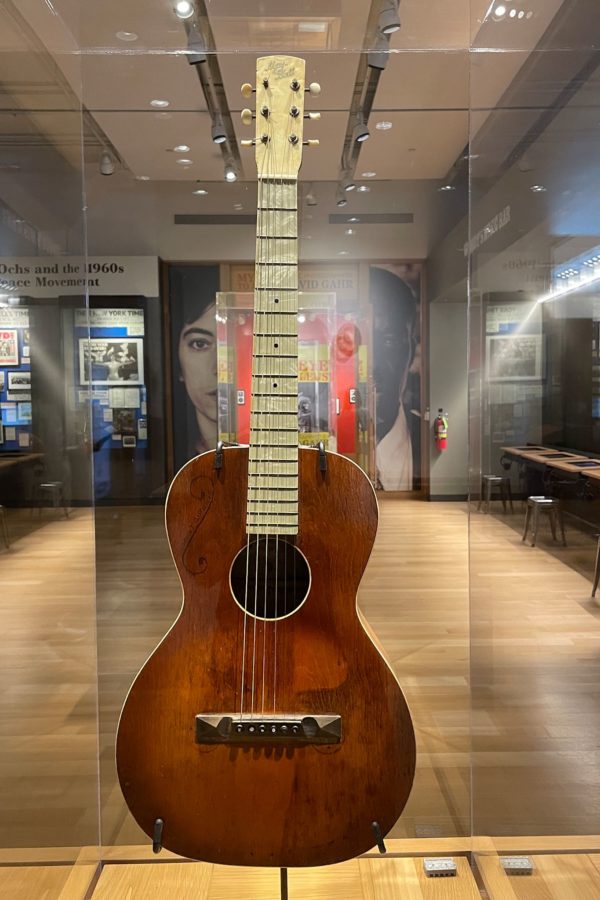
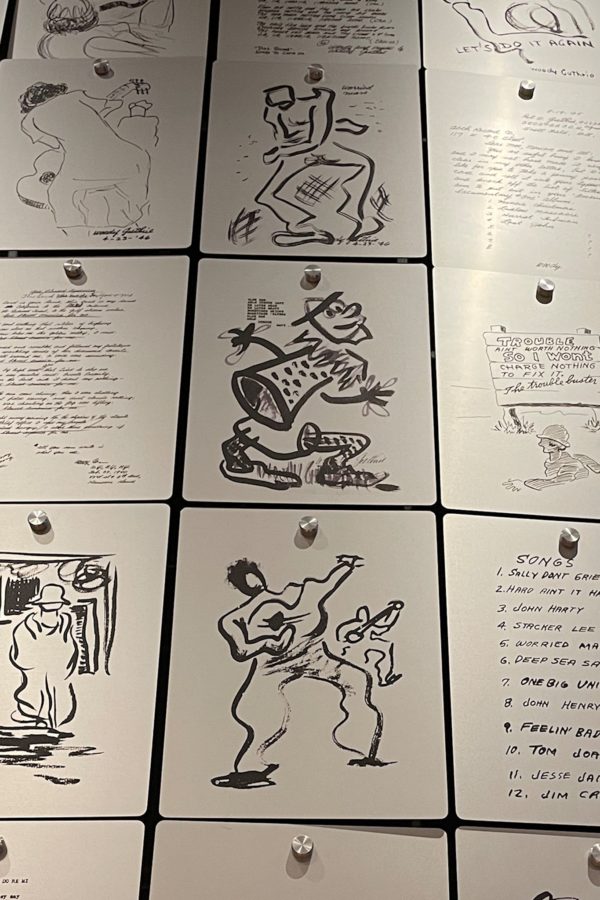
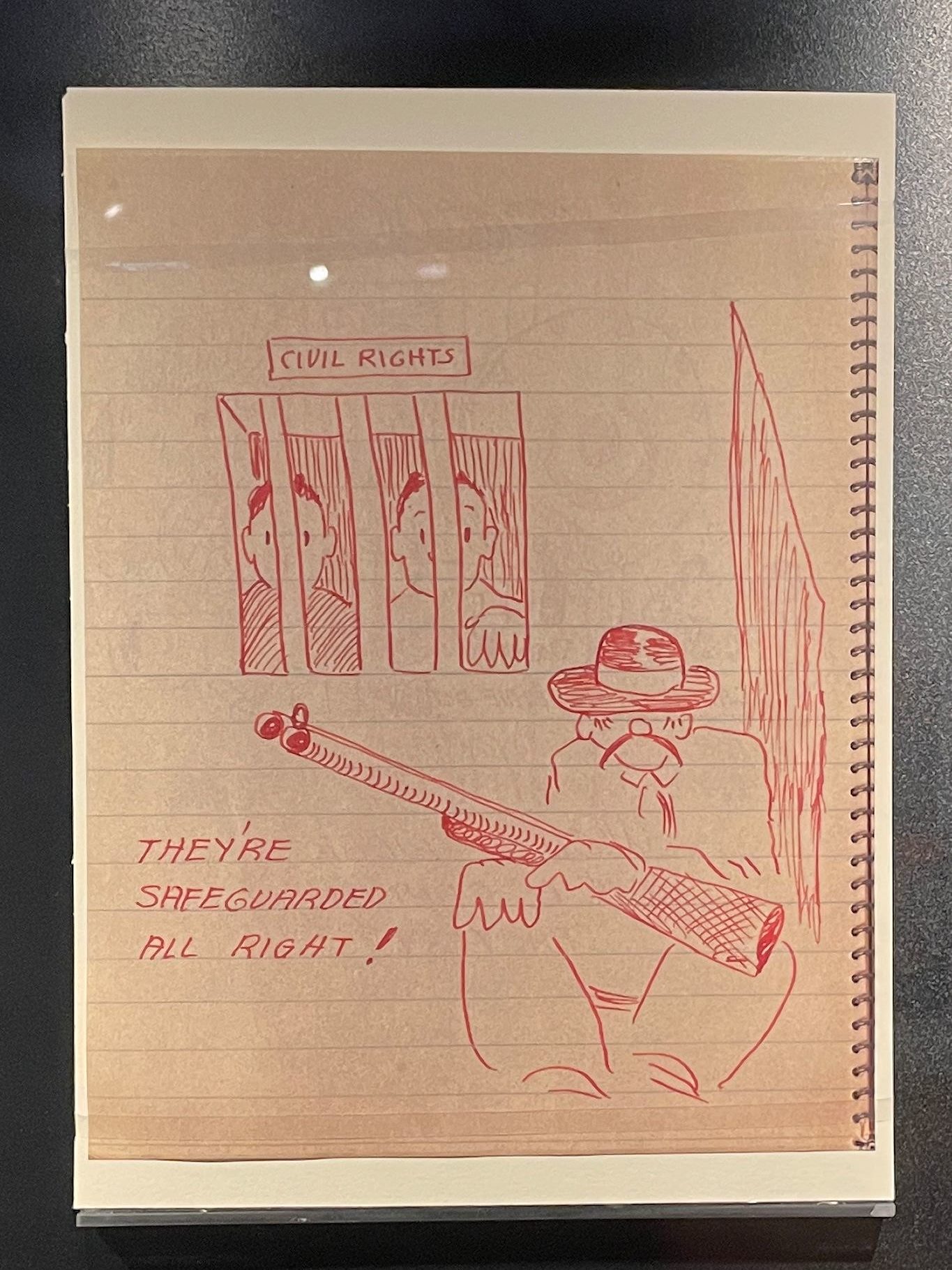
The exhibits at the Woody Guthrie Center provide insight into his influences, his early life, his experiences and travels, and his output as a musician and songwriter, author, and artist. Although Woody wrote over 3000 songs, he only recorded about 300 in his lifetime. The museum exhibit comprises a fascinating selection of his writings, sketches, cartoons and artwork along with insights and original drafts of his songs, both well-known and obscure. There is one guitar, recently acquired, that was owned and played by Woody. Of course, the archive collection is focused on documents rather than artifacts, and although Woody famously abandoned or gave away many of his guitars in the course of his travels, surprisingly, very few of his instruments are known to be in collections (and none with the famous ‘This Machine Kills Fascists’ inscription).
Bob Dylan
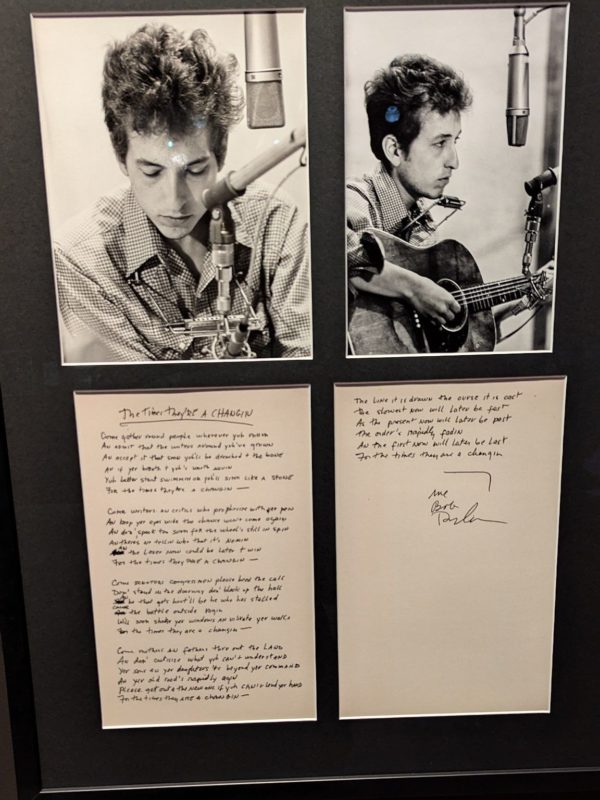
The Bob Dylan Center has a vibe. Large-than-life posters with familiar images greeted us in the lobby to set the stage for a few hours of immersion into the work of this legendary singer/songwriter. From there, an audio-visual presentation introduced visitors to the singer’s history, his origins and influences, and set us up for the exhibits to follow.
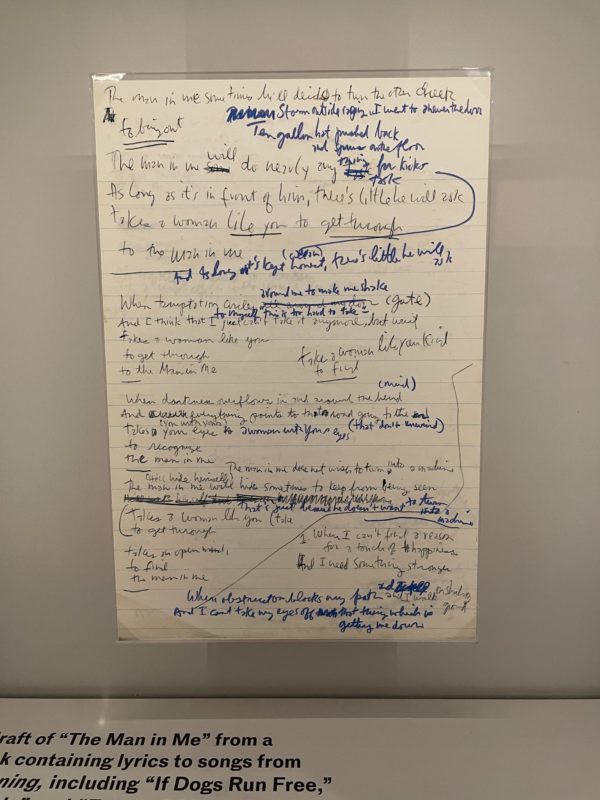
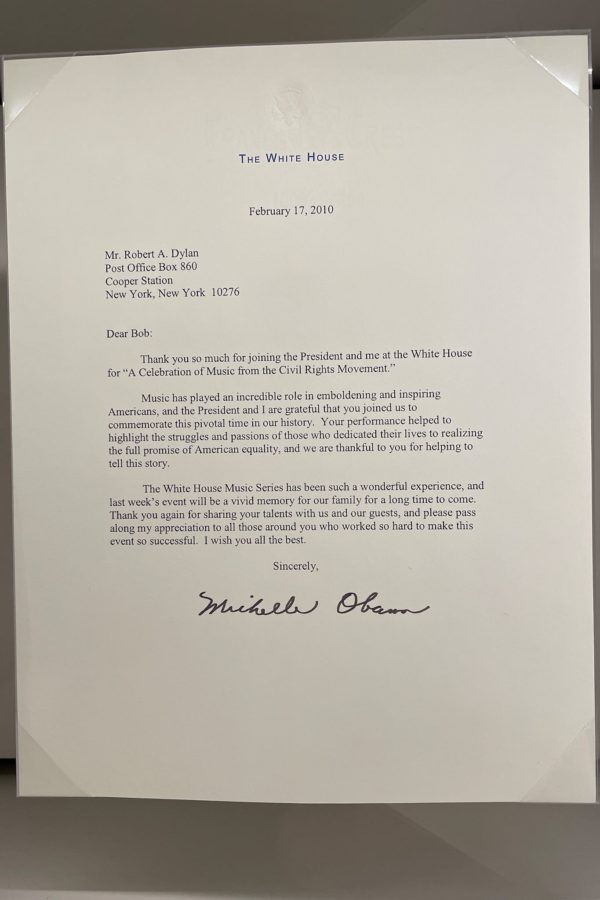
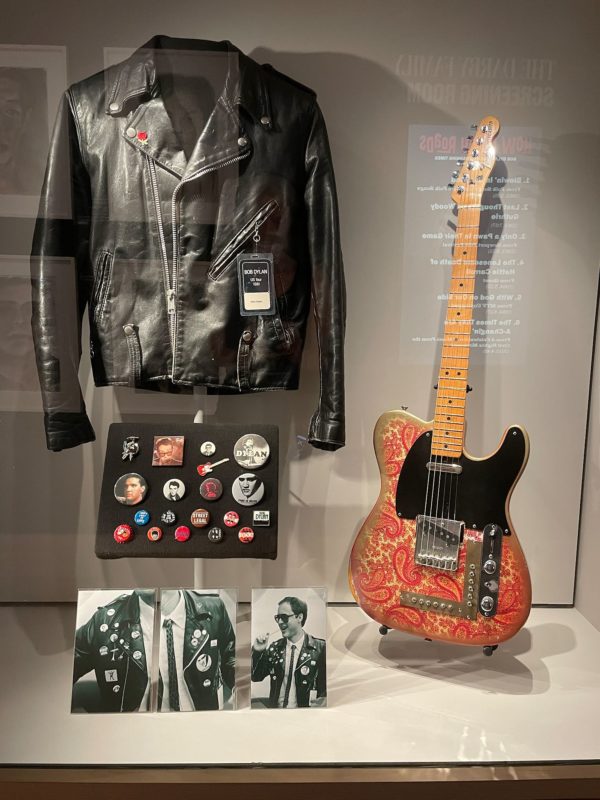
The next room featuring a curated selection of his lifelong work spanning the past 70 or so years, from when he taught himself to play guitar as a 10-year-old in Minnesota, through the time he spent in New York City meeting his hero Woodie Guthrie and becoming an icon of the 1960s, and on to the present. The exhibits included albums, correspondence, cards, photos, clothes, instruments, etc. The center of the room was a set of ‘deep dives’ into a handful of songs, including detailed info on their inspiration, writing, arranging and recording, often including notable insights and anecdotes about supporting musicians and production.
The audio technology that accompanies and supports the displays all through the museum is great. We were each given headphones and an iPod upon entry. Throughout the exhibits, we could get another level of detail just by waving the iPod at strategically placed sensor – to listen to a particular recording or play the sound track for a video, or hear additional background for a photograph. For the deep dives, we could listen to the songs (often including early or obscure or unreleased versions) as we were reading about them. Very cool.
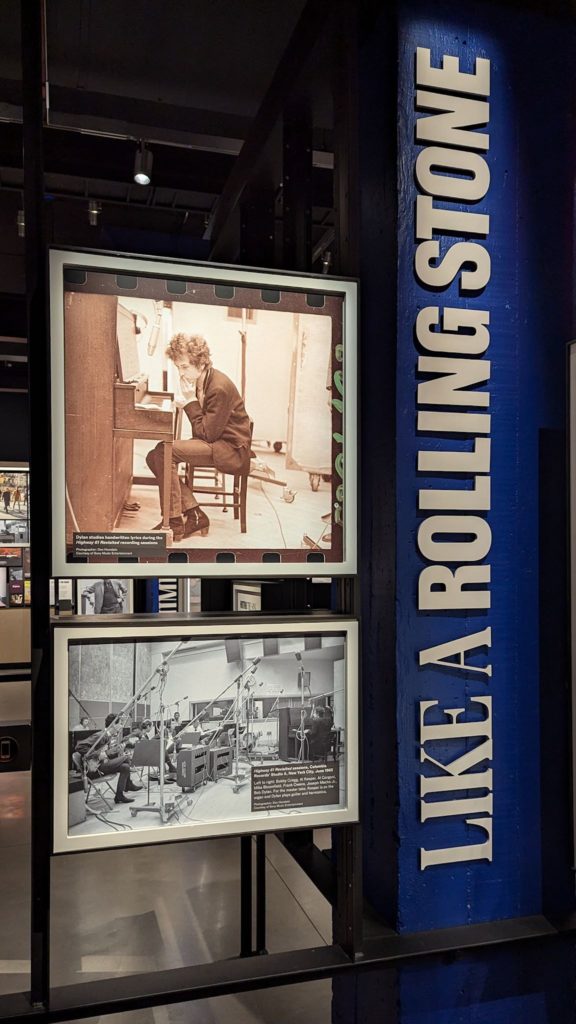
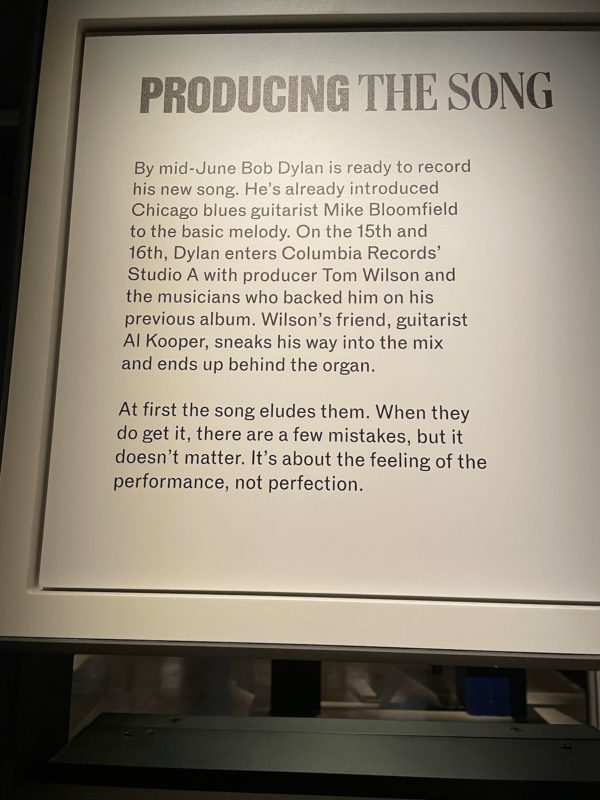
One deep dive that caught our attention featured Like a Rolling Stone. The 4 verses we all know were boiled down from 20 pages of Dylan’s notes. Originally in 3/4 time, at the final rehearsals Bob and the band tried a revised version in 4/4, and that is the version they decided they would record. From their 15 takes, they chose the 4th for the record because it had the best feel, despite including a few mistakes.
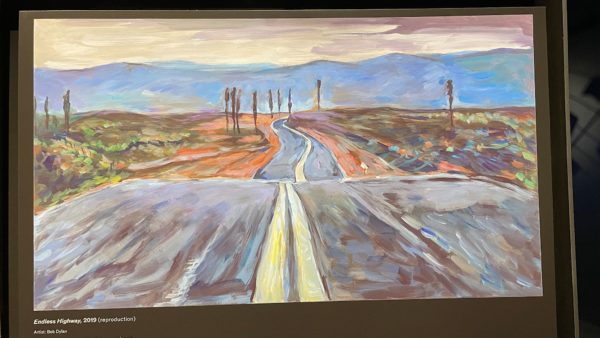
The second floor had an in-depth view of Bob’s commitment to and impact on civil rights, featuring short films about another handful of songs and the incidents that inspired them. There was another section with a selection of memorabilia, correspondence and artifacts from the Archives.
The civil right series of exhibits was moving and disturbing. I’m gonna be real serious for a few words… The lyrics to Only a Pawn in Their Game, released in 1963, seem eerily relevant to today’s sociopolitical situation. Here’s verse 3:
The deputy sheriffs, the soldiers, the governors get paid
And the marshals and cops get the same
But the poor white man’s used in the hands of them all like a tool
He’s taught in his school
From the start by the rule
That the laws are with him
To protect his white skin
To keep up his hate
So he never thinks straight
’Bout the shape that he’s in
But it ain’t him to blame
He’s only a pawn in their game~Bob Dylan
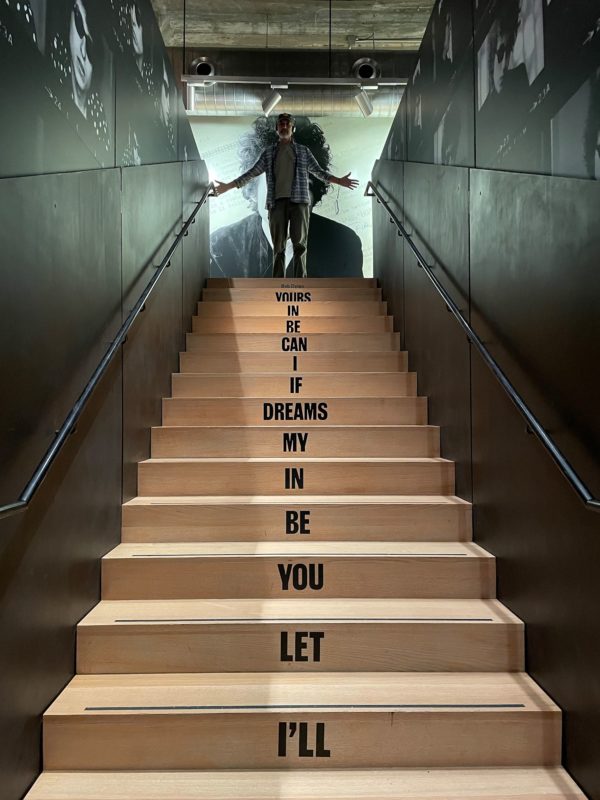
For anyone who’s interested, more Woody Guthrie and Bob Dylan pix…
